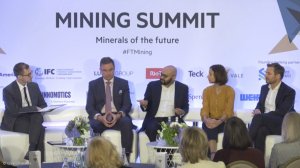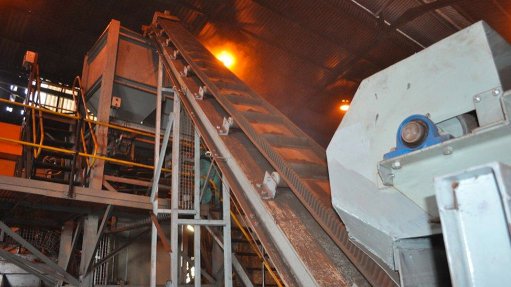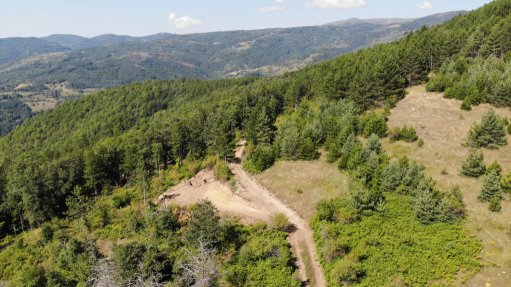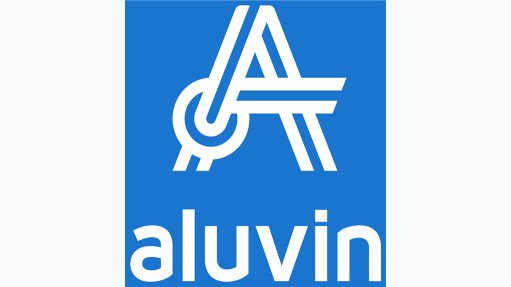Essential integration of mining with circular economy highlighted at FT Mining Summit

FT Mining Summit covered by Mining Weekly’s Martin Creamer. Video: Darlene Creamer.
JOHANNESBURG (miningweekly.com) – Circularity is already practised at many mine sites, which use circular principles to reduce waste and conserve water.
But to achieve full circularity for products – from production to consumption to reuse – requires collaboration between designers, policymakers and industry, the FT Mining Summit heard this week. (Also watch attached Creamer Media video.)
As the circular economy grew in importance, many miners were also starting to look more closely at recycling operations, it was stated during a panel discussion covered by Mining Weekly.
Financial Times commodities correspondent Harry Dempsey, who moderated, referred to the apparent exponential rise of recycling and the circular economy as demand for critical minerals rose for the global energy transition.
Panel participants were Glencore global recycling head Kunal Sinha, Norsk Hydro executive VP corporate development Trond Olaf Christophersen, International Copper Association material stewardship global director Louise Assem, and Circular CEO Douglas Johnson-Poensgen.
Cross-portfolio upcoming demand for critical minerals is roughly calculated to be six times greater than current supply, pointing to the need for as much responsible mining production as possible between now and 2050.
“Even if you ramp up all the responsible production you can between now and 2050, we think there’s still a gap. It’s hard to quantify, but there’s still a gap. So, how you meet that gap is through what we would like to think of as responsible consumption, which is essentially your circular economy,” said Sinha.
“The circular economy is not just recycling. It’s product life extension, repair, reuse, all of that, and the very last step is recycling, so it’s not a competition with primary mining because you need as much mining as you can responsibly do, but you also need to consume more responsibly and have a circular ecosystem.
“Every mining company is different. Your portfolio is different. I can only speak for Glencore. From my point of view, our vantage point comes down to three things from our portfolio. One is assets. We have two types of assets. We have assets that have been recycling for a long time. These are very complex metallurgical assets, so what you can do is operate at a massive scale where you blend both the primary feeds and the recycled feeds, very difficult to process materials,” said Sinha, who added that Glencore also had other built assets that could be repurposed, exemplified by lead refinery outside London, parts of which are being repurposed for electronics recycling and potentially also battery recycling.
“So, instead of building greenfield, you can pivot and use these existing assets to do it much faster,” Sinha noted.
Then there was risk management: “From our experience to do recycling properly, the risk is very high. To manage that risk, you need the same skills as commodity trading because you’re not sitting on a deposit of copper and know exactly what it is in there and you’re mining it and you have a plan. You have to buy this feed across hundreds of suppliers. You don’t really know what you’re getting, so you have all kinds of risks in terms of financial risk, counter-party risk, a lot of these risks, which is the same as in commodity trading, so our trading DNA helps with the recycling.
“In a world where you have a lot of primary production into the energy transition, as we have, and a history of recycling, you can easily combine those two to close the loop,” added Sinha.
ALUMINIUM
When it comes to aluminium, Christophersen reported that the circular economy was already in place, with roughly one-third of the total aluminum metal supply being recycled material.
In more mature markets such as in Europe and the US, 40% to 45% of the total metal production is based on aluminium scrap.
“A significant share of the total metal supply is secondary aluminium and part of the circular economy,” Christophersen emphasised.
Going forward, Norsk Hydro is of the view that growth in the circular part of the market will be much higher than the growth in the primary side.
The main drivers of this are expected to be customer demand, with car makers giving much more attention to sustainable supplies, as well as regulations of countries. These include end-of-life vehicle regulations in Europe and waste shipment directives in the US.
More than two-million tons of aluminium scrap in the US and a million tons-plus of aluminium scrap in Europe currently being exported could be recycled internally.
In addition, considerable investment going into scrap-sorting technology development could also result in much more secondary aluminium being recycled within the US and Europe.
Norsk Hydro, an integrated aluminium and renewable energy company, mines and refines bauxite and smelts and recycles aluminium.
More than half of its aluminium metal production is based on secondary material, with mining and scrap dealing being completely different businesses, with recycling being very much more commercial.
“You have to deal with a lot of small suppliers on the scrap side. ‘Scrap is not scrap’. It depends a lot on the quality that you are buying, so it’s a completely different business and you need a completely different business model in order to operate in the recycling business compared to the mining business,” said Christophersen.
COPPER
Assem reported that the metals value chains were already circular, “and mining plays a role in that because without the stocks from mining, there would be no circular value chain, there would be no stock to recycle".
“So, they are already playing a role, although mining has been left out of the perception of what a circular economy looks like. There is huge demand increase expected for many of the metals, including copper, and that demand is already being filled by both primary and secondary material, and it will continue to be filed by both, as it should be,” Assem said.
“There are many other drivers, like the throw-away society and the negative perception of mining that does exist, driving what is an attractive concept in the circular economy. It’s nice to think that if we can be fully circular, we won’t have to dig things out of the ground and cut down trees, for example. But the reality is that we do need both.
“There are also regulatory drivers. Europe has a lot of legislation around the circular economy itself and also around sustainable products, along different aspects of the circular value chain. In Asia, there are also lots of circular pieces of legislation in Japan, China and South Korea and they are going at it from different perspectives.
“In the US it is slightly different. There’s more of a carrot than a stick, like you would get in Europe. You also have the original-equipment manufacturers (OEMs) that are driving things from the bottom, particularly when we look at targets around recycled content for end-user products. So, that’s also driving things up the supply chain,” Assem added.
BATTERY MATERIALS
In Europe, OEMs using batteries are expected to have a per battery carbon footprint, said Johnson-Poensgen, whose company is pursuing traceability in the battery value chain, which means that probably from 2026, consumers will be able to compare embodied carbon in a battery.
He reported that the battery in an electric vehicle accounts for roughly half the supply chain’s contribution to the carbon footprint in manufacturing each vehicle and recycled battery materials have half the energy requirement to turn scrap into battery-grade materials.
Indicated during the panel discussion was that going forward, markets would likely be more intent on procuring recycled secondary material than primary material in the interests of global sustainability and mitigation against climate change.
Article Enquiry
Email Article
Save Article
Feedback
To advertise email advertising@creamermedia.co.za or click here
Announcements
What's On
Subscribe to improve your user experience...
Option 1 (equivalent of R125 a month):
Receive a weekly copy of Creamer Media's Engineering News & Mining Weekly magazine
(print copy for those in South Africa and e-magazine for those outside of South Africa)
Receive daily email newsletters
Access to full search results
Access archive of magazine back copies
Access to Projects in Progress
Access to ONE Research Report of your choice in PDF format
Option 2 (equivalent of R375 a month):
All benefits from Option 1
PLUS
Access to Creamer Media's Research Channel Africa for ALL Research Reports, in PDF format, on various industrial and mining sectors
including Electricity; Water; Energy Transition; Hydrogen; Roads, Rail and Ports; Coal; Gold; Platinum; Battery Metals; etc.
Already a subscriber?
Forgotten your password?
Receive weekly copy of Creamer Media's Engineering News & Mining Weekly magazine (print copy for those in South Africa and e-magazine for those outside of South Africa)
➕
Recieve daily email newsletters
➕
Access to full search results
➕
Access archive of magazine back copies
➕
Access to Projects in Progress
➕
Access to ONE Research Report of your choice in PDF format
RESEARCH CHANNEL AFRICA
R4500 (equivalent of R375 a month)
SUBSCRIBEAll benefits from Option 1
➕
Access to Creamer Media's Research Channel Africa for ALL Research Reports on various industrial and mining sectors, in PDF format, including on:
Electricity
➕
Water
➕
Energy Transition
➕
Hydrogen
➕
Roads, Rail and Ports
➕
Coal
➕
Gold
➕
Platinum
➕
Battery Metals
➕
etc.
Receive all benefits from Option 1 or Option 2 delivered to numerous people at your company
➕
Multiple User names and Passwords for simultaneous log-ins
➕
Intranet integration access to all in your organisation

















